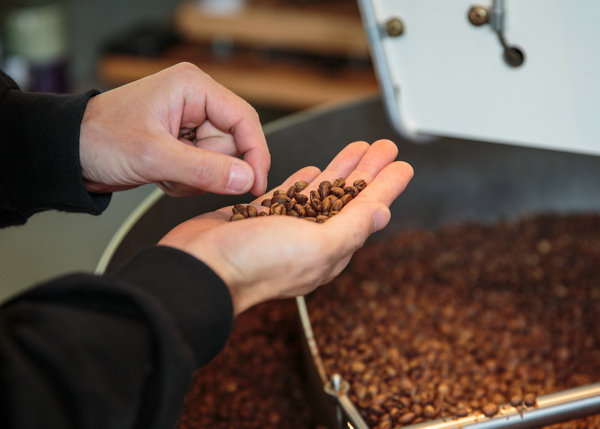Boutique coffee shops jolt chains to step up sophistication
( Agencies ) Updated: 2016-06-04 14:31:04
The coffee obsession has reached a new peak: You can now know the altitude at which the beans used for your morning cup of java were grown.
Spurred by the popularity of boutique coffee purveyors, Starbucks and other chains are taking steps to appeal to the growing ranks of coffee aficionados. They are experimenting with different roasting and brewing techniques, while providing more information about the origins of their customers' favorite brew.
That includes where the coffee is from, as well as how and when it was roasted.
At Augie's coffee shop in Redlands, California, bags of coffee list the elevation at which the coffee was grown. A higher altitude is said to lead to a fruitier and more complex flavor.
While Starbucks Corp. isn't offering that level of detail yet, the Seattle-based chain has been working to burnish its reputation. It opened a high-end retail "Reserve Roastery" near its headquarters in 2014.
The company is also offering more coffee from a single origin, rather than the blends most Americans are familiar with. And it recently began using the "Clover" brewing system that it says helps extract the optimal flavor for every cup.
For iced coffee, it also switched to "cold brew" rather than merely brewing hot coffee and chilling it.
The moves by Starbucks come as smaller chains have touted techniques like "nitro brew", which infuses nitrogen gas to create a creamier coffee, and "pour over" brewing, which essentially entails pouring hot water over grounds.
"I've really been able to pick up on what real, good coffee tastes like," says Bekah Stoneking while drinking a nitro brew at Back Alley Coffee Roasters in Wake Forest, North Carolina.
|
|
|
|
|
|
|
|


























 Raymond Zhou:
Raymond Zhou: Pauline D Loh:
Pauline D Loh: Hot Pot
Hot Pot Eco China
Eco China China Dream
China Dream China Face
China Face






